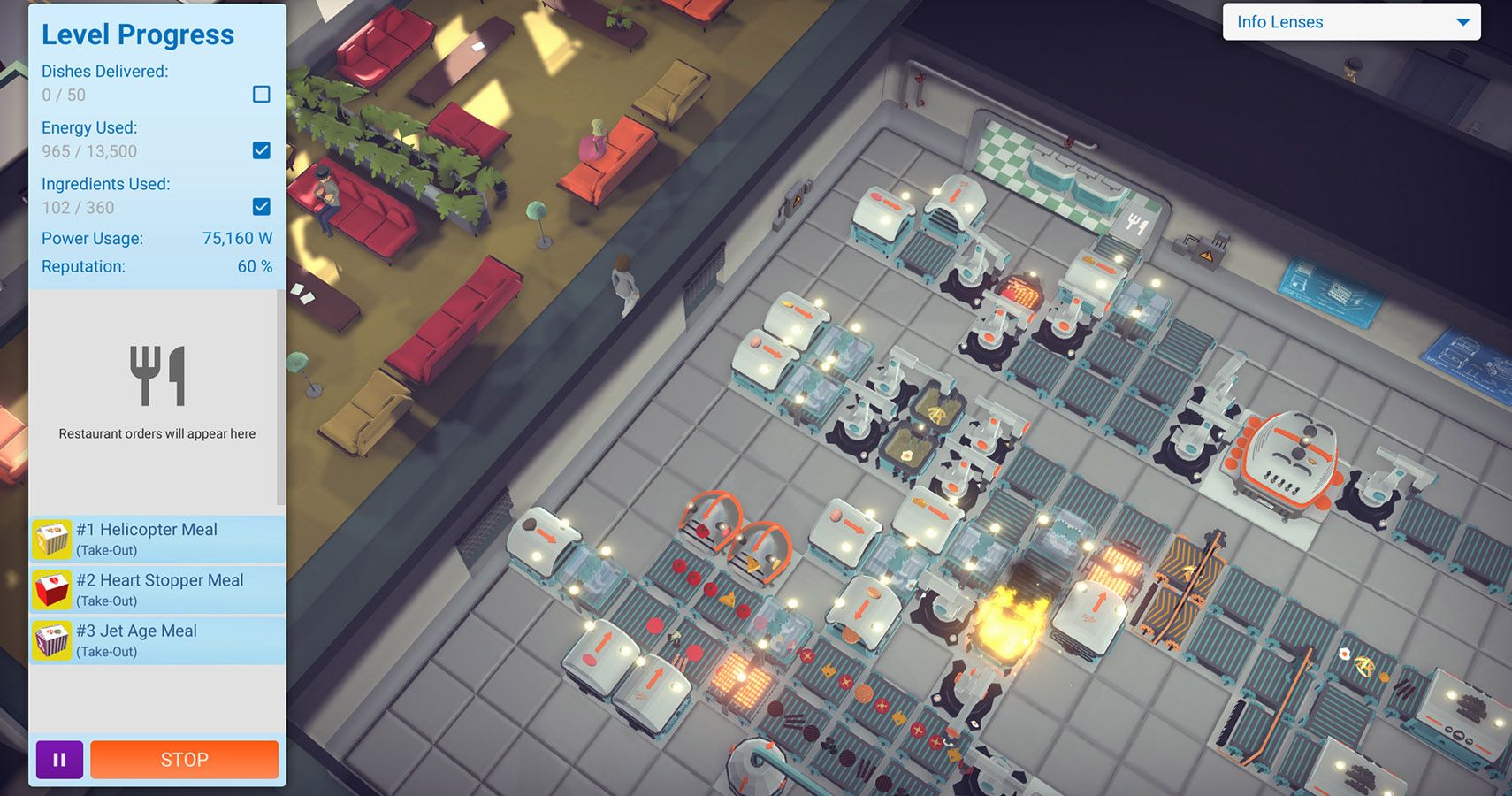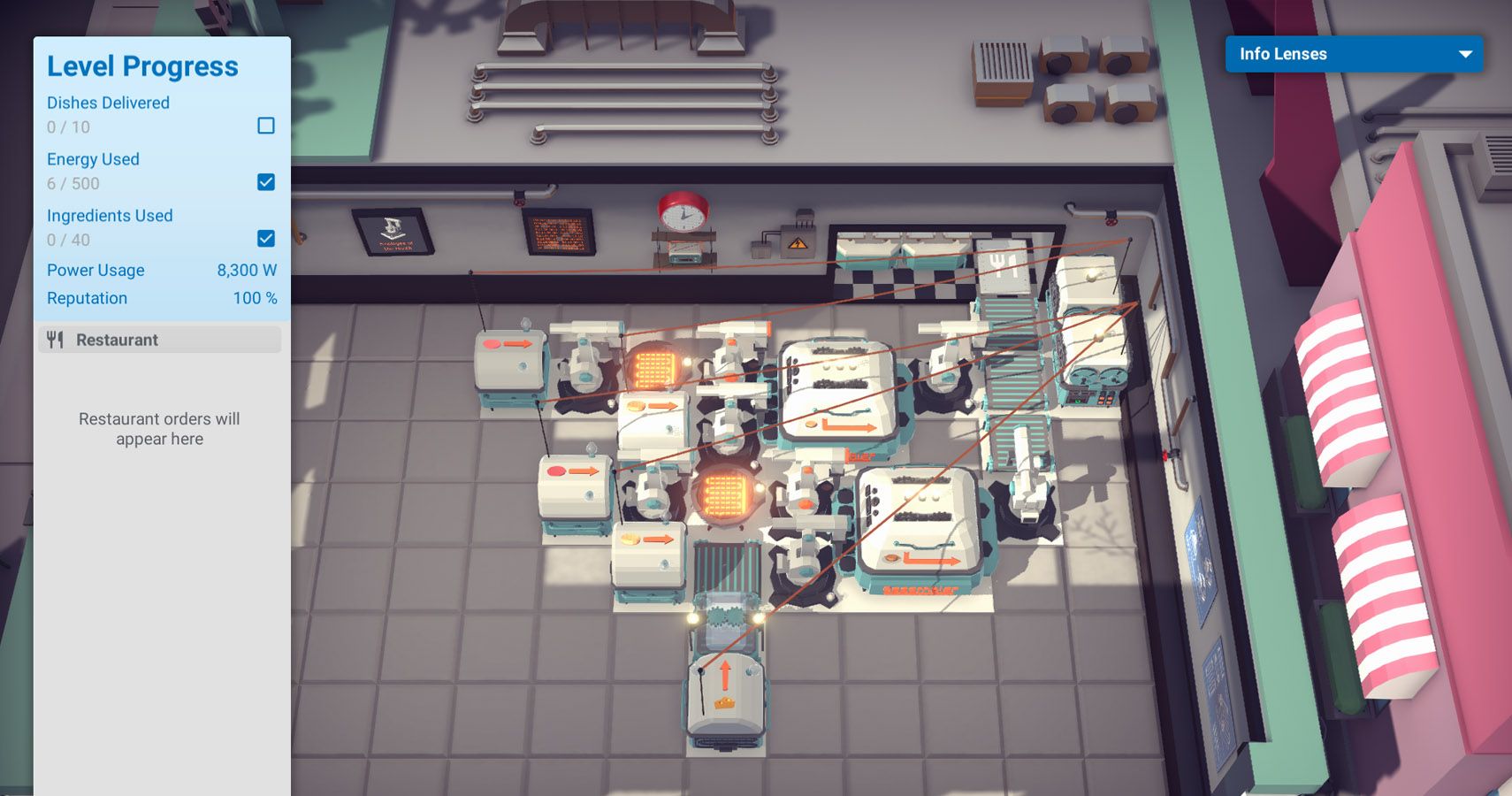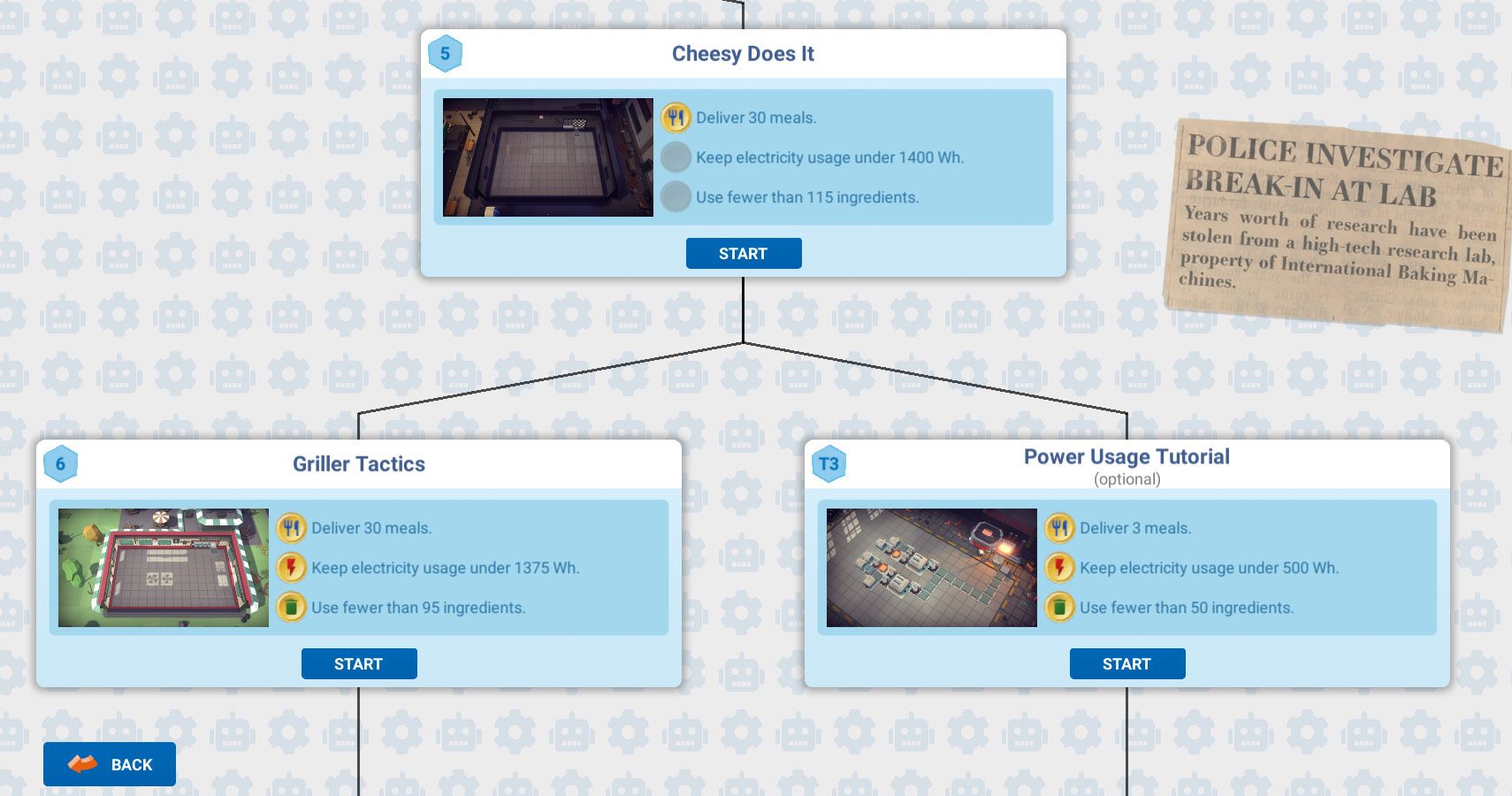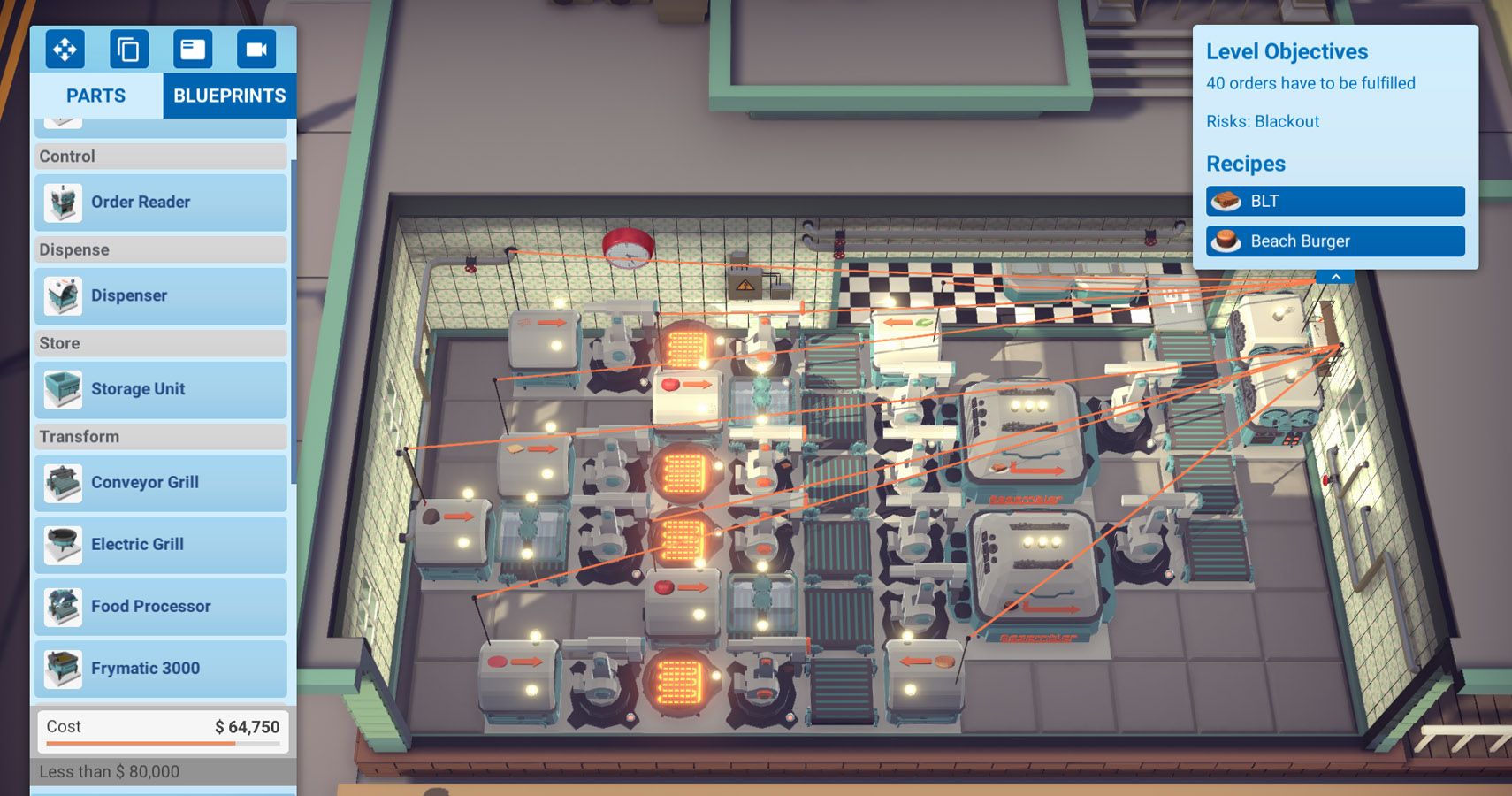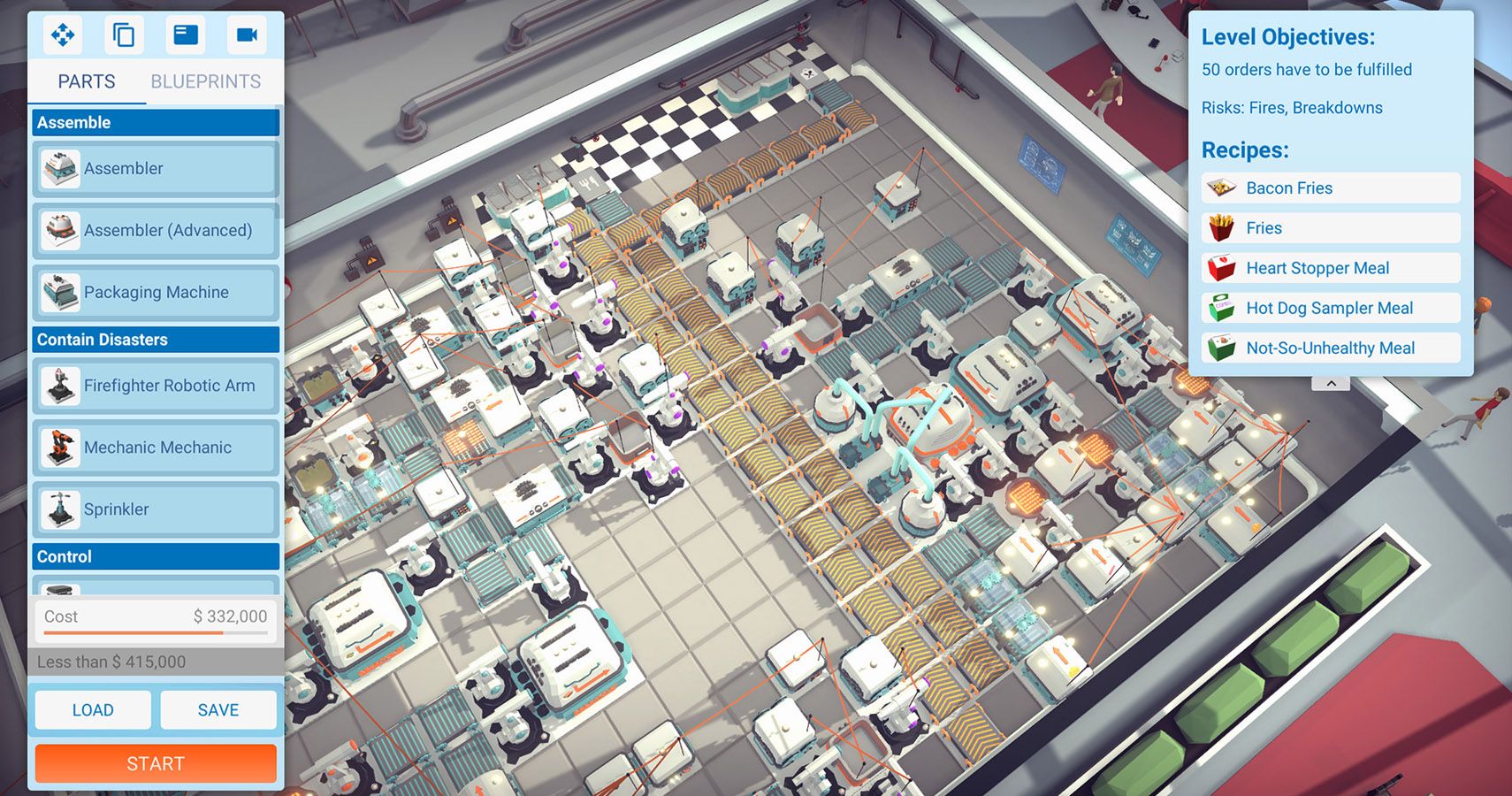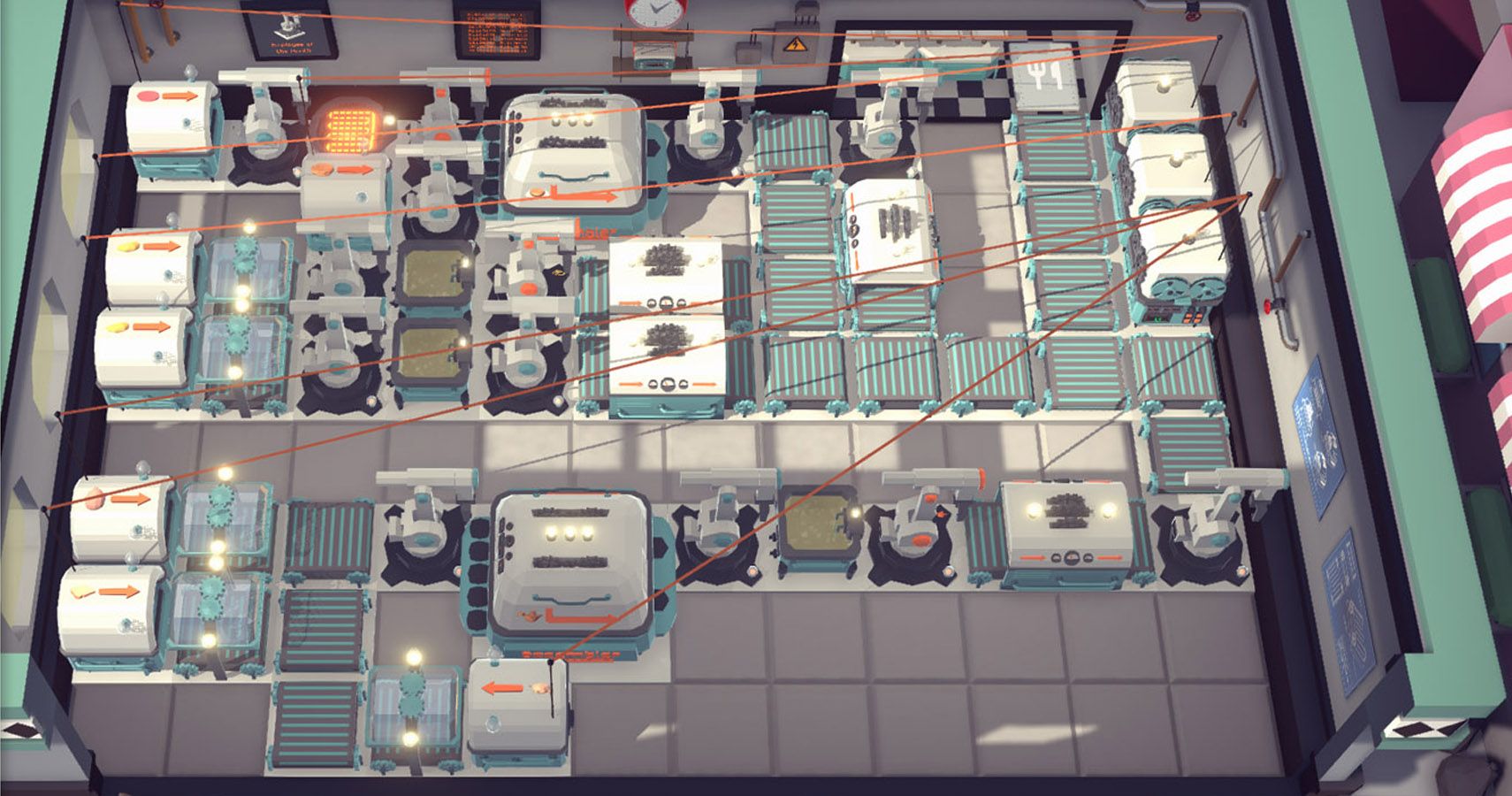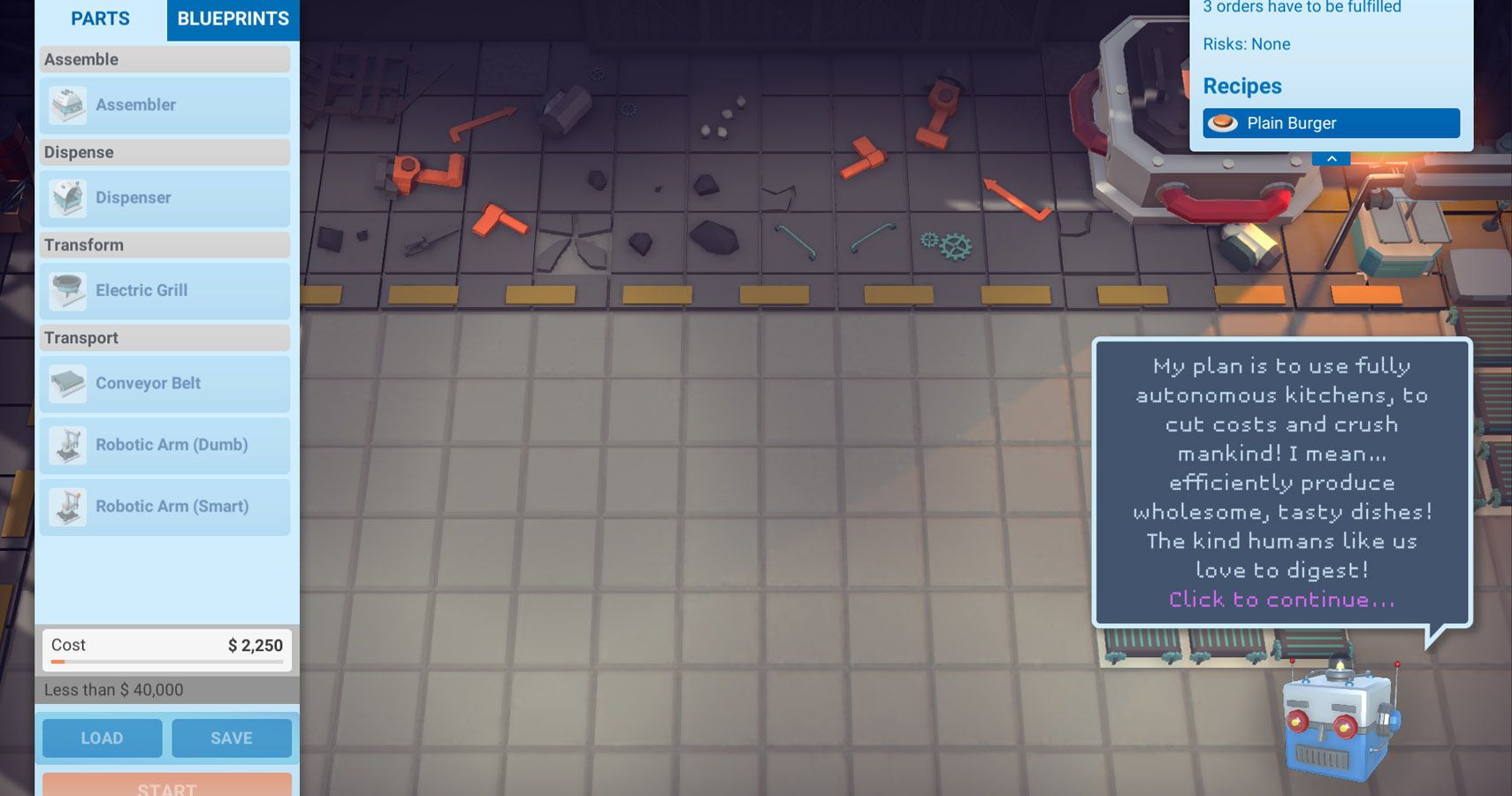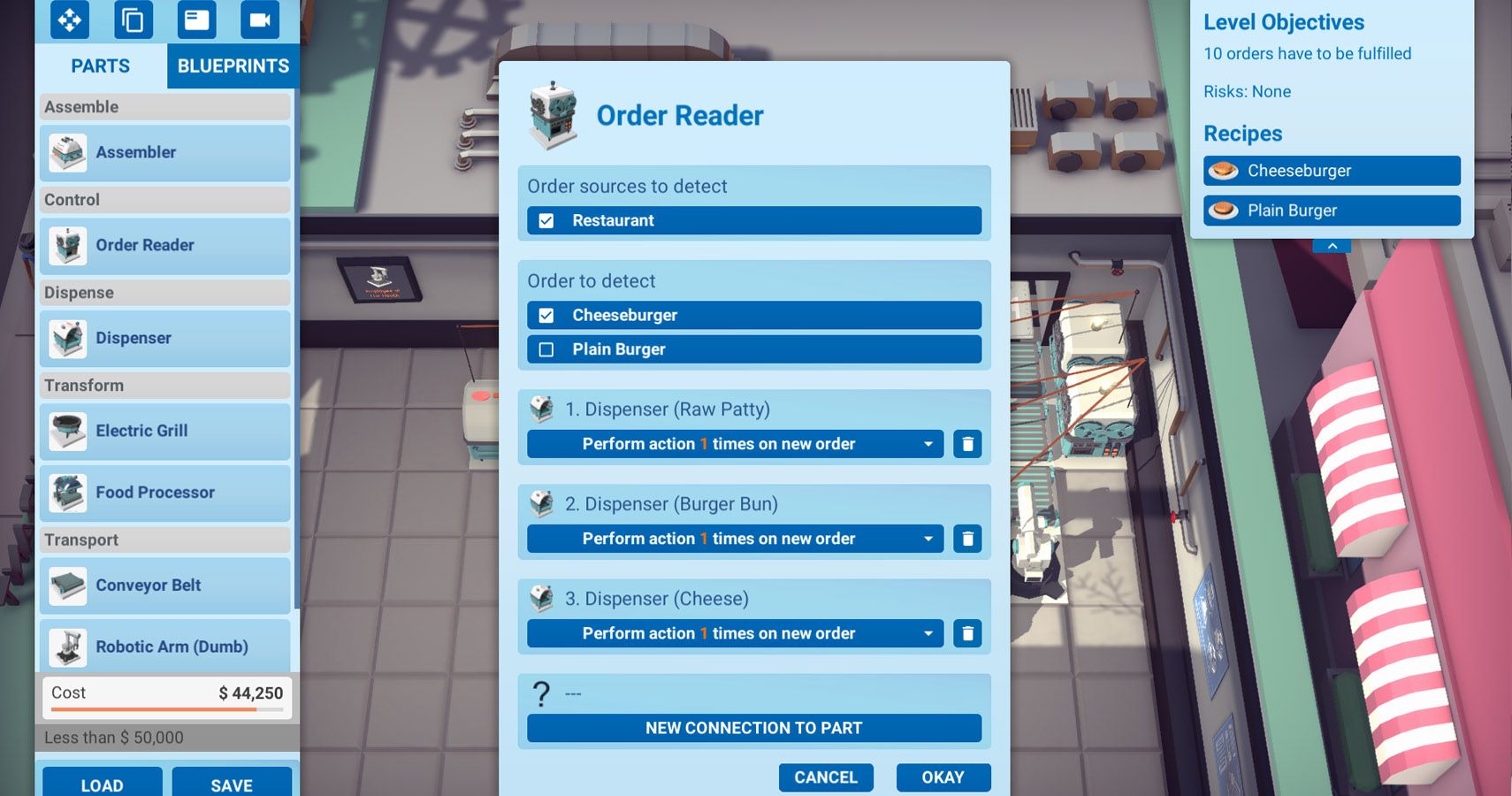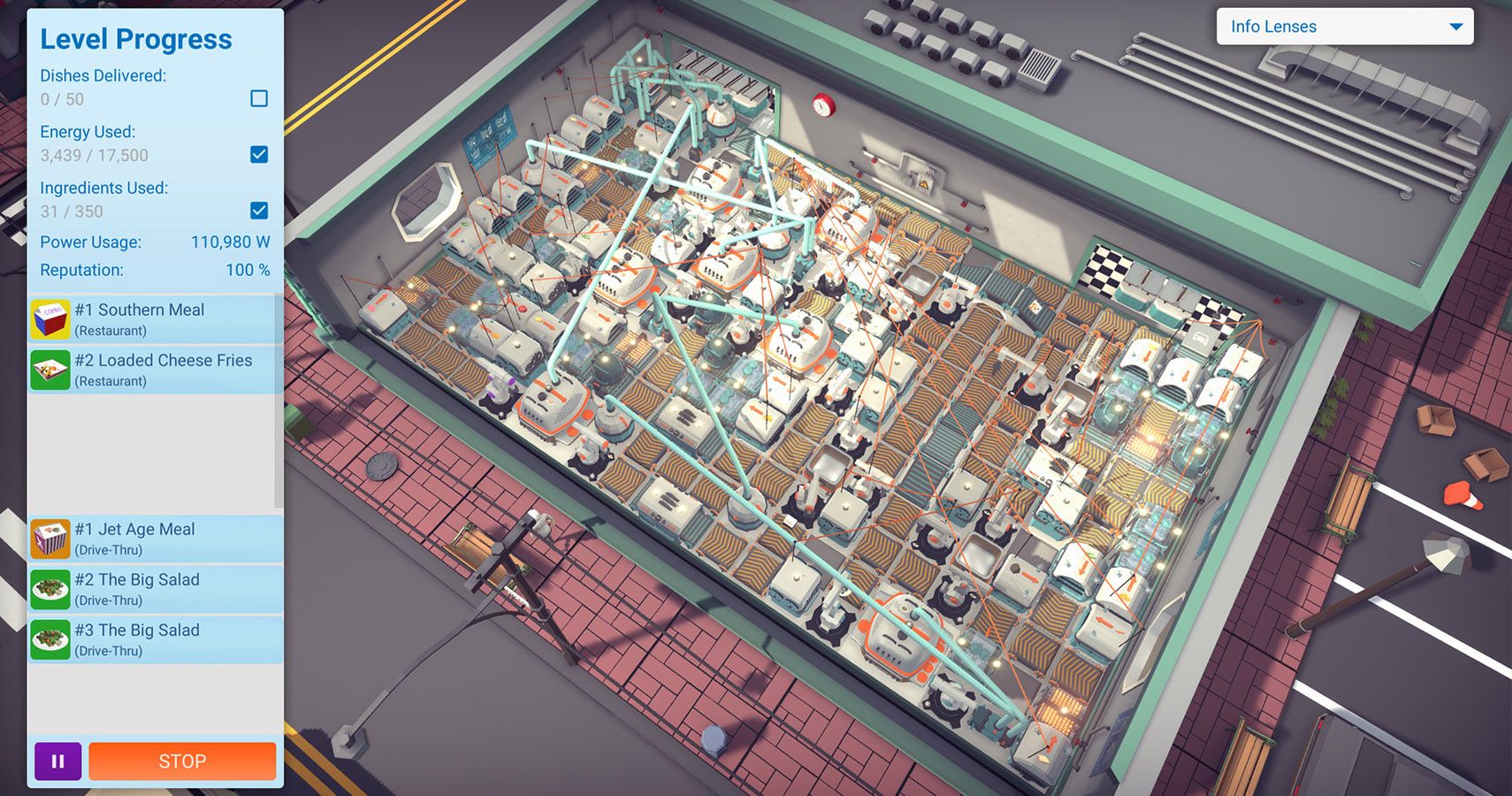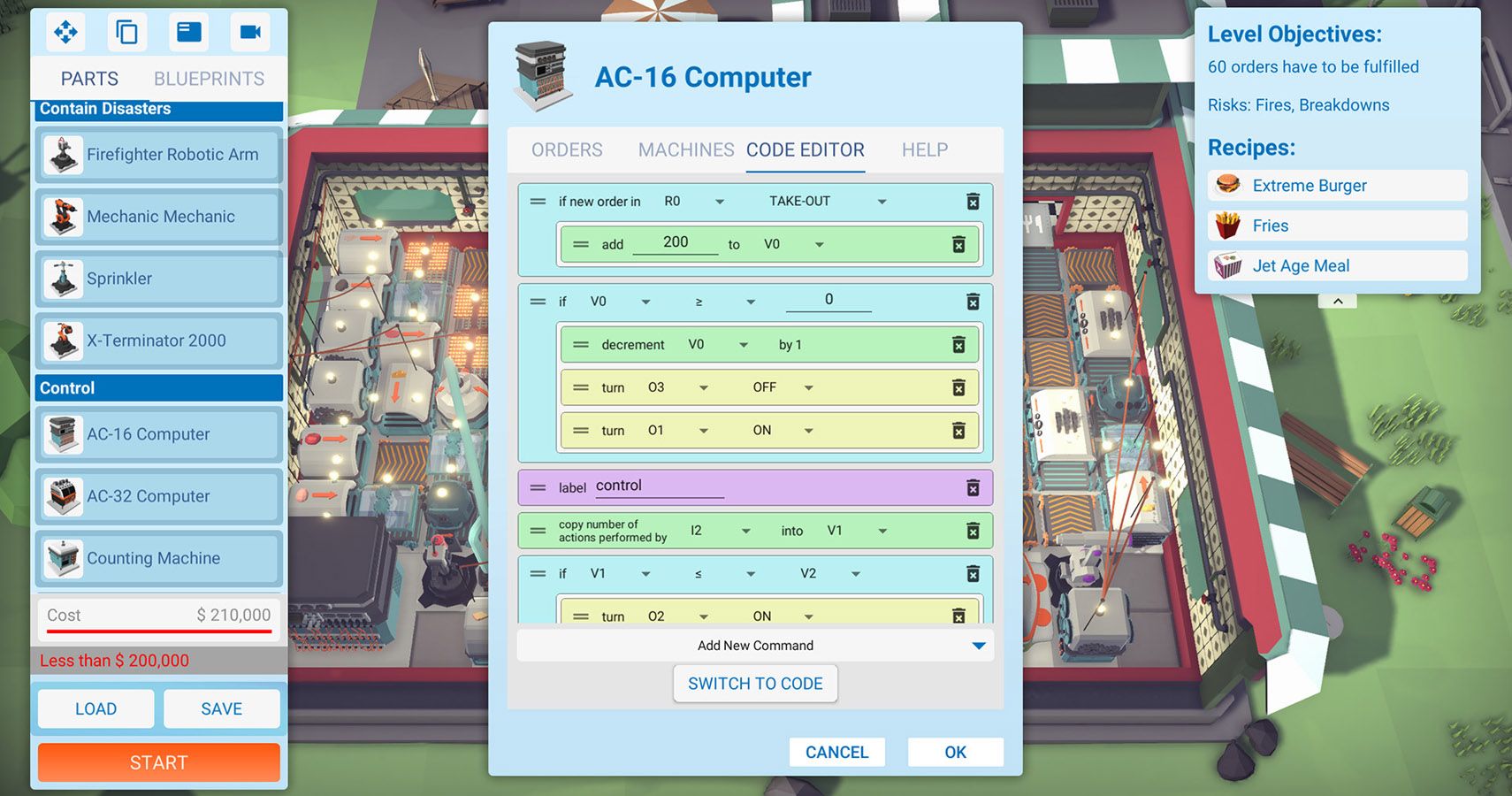Cooking games are quite prevalent these days. The popularity of cooking franchises such as Overcooked, Cook, Serve, Delicious and Cooking Mama, shows that there is a market for making food in video games.
When first opening Automachef I was expecting a similar experience. What I got was something far more. Automachef offers a unique take on the cooking simulation genre, focusing on puzzles and logistics while presenting an increasingly difficult challenge.
Different Ways To Play
The game’s main mode is a 30-level story-driven campaign, with optional bonus and tutorial levels. In each kitchen, players must produce the required recipes by building a fully automated kitchen. There is a wide range of machines to choose from, and players must select the best combination in order to fulfill the tasks for each level.
In addition to fulfilling orders, there are also other goals to achieve. These are usually based around energy and ingredient usage. It’s not enough just to have a functional kitchen, you are also rated on your efficiency.
Thankfully, you are only required to achieve one goal from the three to unlock the next level. I was glad for this, due to the fact that achieving all of them is incredibly difficult.
Outside of the main story mode, there is also a contracts mode. This requires you to build a kitchen to certain specifications, outlined in a contract, then collecting a reward if successful. Your money will gradually increase, allowing you to unlock new machines and take on increasingly complex contracts.
For those who want an even greater challenge, the game also comes with Steam Workshop functionality. You can design and share your own custom scenarios and kitchens, as well as download and play others' creations.
A Cooking Puzzler
Automachef is aiming to be a game which makes you think. The focus of both main game modes is definitely the puzzle element. Every kitchen offers unique challenges, and overcoming these is the primary focus.
Some limit space, meaning you need to think creatively when placing machines; while others limit power usage, requiring machines' outputs to be adjusted. As you get further through the story mode, you will also encounter increasingly complex machines.
The difficulty curve of the game is variable, with the gradual increase suddenly jumping quite severely around halfway through the story mode. When I first started playing, I found it challenging, but manageable. As I encountered increasingly complex machines, I came across levels which were much more difficult to work out.
The time it takes to complete a level suddenly jumped drastically. While earlier levels took less than 30 minutes, this soon doubled (and then some), as the puzzles became more complex. Despite sinking hours into the game (I'm easily into double figures), I've still not completed it, although I have enjoyed the journey.
The earliest big hurdle was when I suddenly had to contend with identifying and delivering both take-away and dine-in orders. This required me to use so many machines that I still feel like there’s probably an easier way to do it, which I just can’t figure out.
A Good Looking Kitchen
In terms of graphics, the game is simple but effective. The graphics are not sophisticated or hugely complex, but that works well, as there is absolutely no need for them to be. Each kitchen has a simple layout, which is easy to navigate and understand.
The focus for the game is firmly on the gameplay and it is exactly where it should be. While the graphics may be simple, they are well designed. Each machine looks distinctly different and is identifiable when you scan over your kitchen. This makes it much easier and much less frustrating to play the game, something which is vital in a puzzler.
I also liked the small touches, such as the thin lines which show the connections between the order machines and machines they are controlling. It’s details like this which help you identify backlogs and issues while testing your set up.
Tutorials And Take Away
My main gripe with the game is the difficulty curve and lack of explanations. There seems to be no logic as to which machines and concepts you are given guidance for, and which you are left to figure out on your own.
Some of the machines, including order readers, offer explicit instructions on how to use them. There are also tutorials for some of the concepts, such as disasters and blackouts. However, increasingly complex concepts, such as differentiating between dine-in and take-out orders are not explained at all. You're left completely alone to figure out the vast array of order machines, storage bins, and everything else you need to complete the task.
I would have liked to have seen more in the way of tutorials, helping those of us who find logic puzzles difficult yet enjoyable, to learn a little more about how things go together.
The Joy Of Automation
Although I would have liked more guidance, the joy of solving the puzzles in Automachef is high. Seeing each machine work in perfect synchronization is beautiful and relaxing. Actually solving the level and working out the logistics is a huge challenge, but for anyone who enjoys logic puzzles, this game is for you.
I dare say there’s also an educational element to the game. I certainly feel smarter for having played it. The way you need to think in order to solve the problems is increasingly complex and some of the very late machines even introduce basic coding concepts. This means that your brain will get a great workout before you relax and enjoy watching your creation come to life.
Overall the game is enjoyable to play and has enough game modes to keep you busy for a long time, especially if you venture into mods and custom scenarios. My only concern is the steep difficulty curve from the middle of campaign mode, and the lack of tutorials for the more complex machines.
4 Out Of 5 Stars
A review copy of Automachef was provided to TheGamer by the publisher. Automachef is available now for the Nintendo Switch and PC
Automachef

